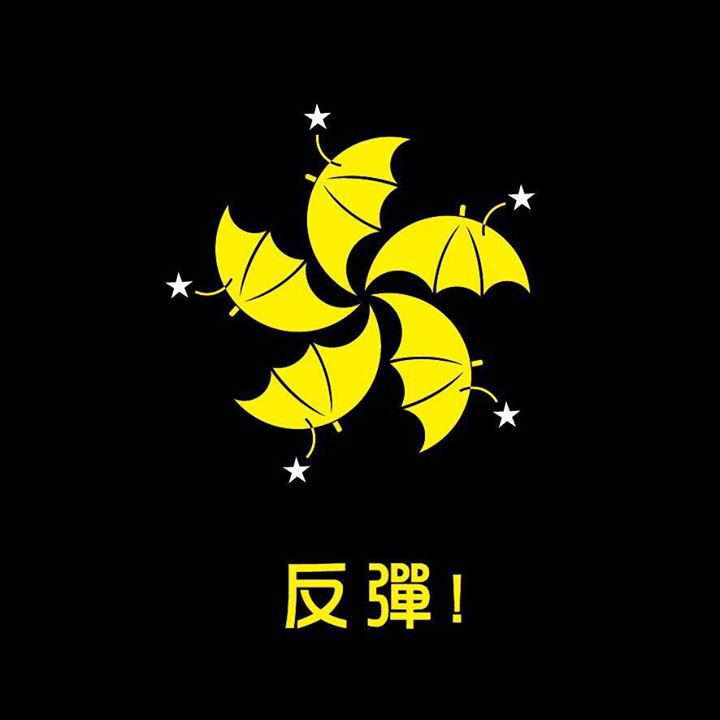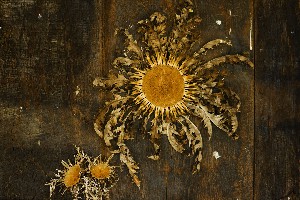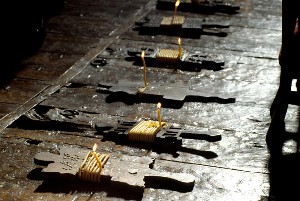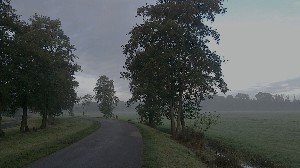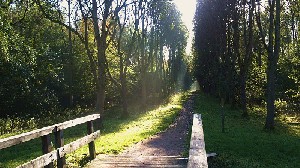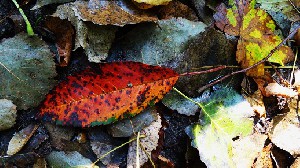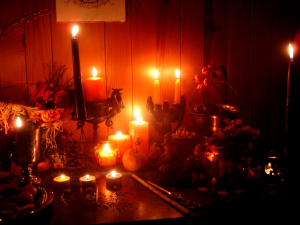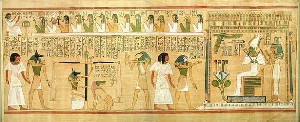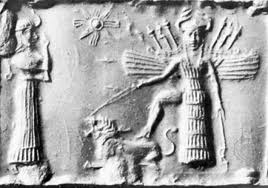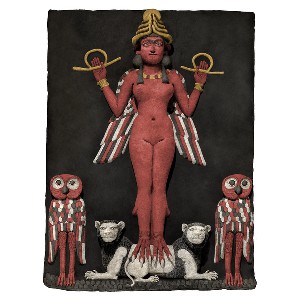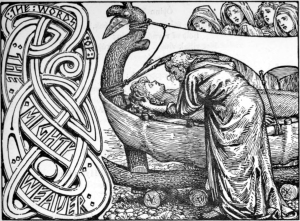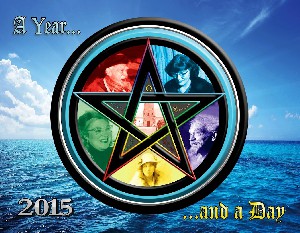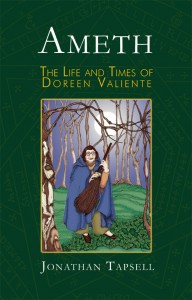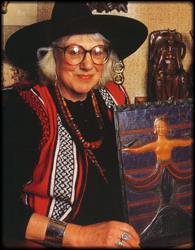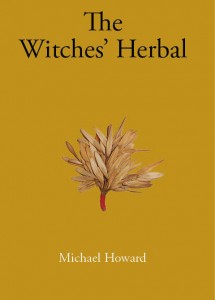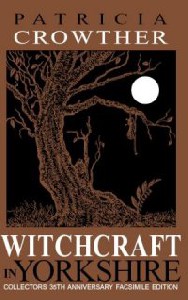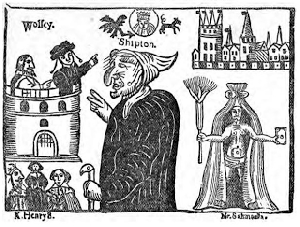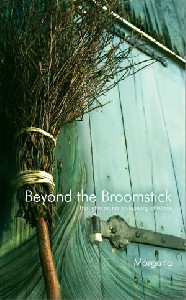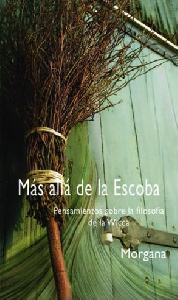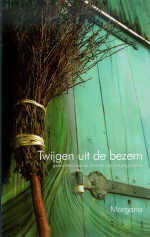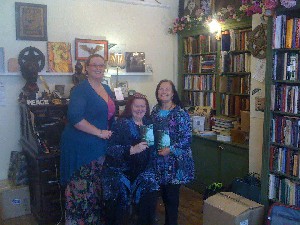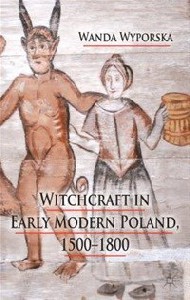Paleodieet
In de goede oude tijd was alles beter, dat weet iedereen. Zo hebben christenen hun Paradijs van voor de zondeval, paganisten/heidenen hun Europa vóór de komst van het christendom, Hesiodus het gouden tijdperk onder de heerschappij van Kronos, Freudianen het verblijf in de moederschoot, en sommige mensen met belangstelling voor gezonde voeding de oertijd waarin de mensen zich voedden volgens het ‘paleodieet’.
Het paleodieet is gebaseerd op wat jagers-verzamelaars in de vroege steentijd (het paleolithicum) zouden hebben gegeten. De gedachte hierachter is dat het spijsverteringsstelsel van de moderne mens nog steeds hetzelfde is als toen, terwijl het voedingspatroon wel sterk is veranderd, en dat veel gezondheidsproblemen voortkomen uit dit verschil.
De Nederlandstalige National Geographic besteedde in het septembernummer aandacht aan het steentijddieet door te kijken naar het voedingspatroon van hedendaagse jagers-verzamelaars zoals de Tsimane in het Boliviaanse Amazonegebied, de Hadza in Tanzania en de Inuit op Groenland. Deze volkeren hebben minder last van hart- en vaatziekten en hieruit is geconcludeerd dat zij gezonder eten dan mensen van wie het voedsel afkomstig is uit landbouw en veeteelt (en vaak industriële bewerkingen ondergaat).
De samenstelling van het paleodieet is niet gebaseerd op archeologische vondsten, maar op een idee over ‘de oermens’, in combinatie met het dieet van hedendaagse jagers-verzamelaars. Volgens evolutionair voedingsdeskundige Loren Cordain halen die 73% van hun calorieën uit vlees en vis. Uit nieuw onderzoek blijkt echter dat de jacht vaak niets oplevert en dat deze volkeren dus helemaal niet zoveel vlees eten, met uitzondering van de Inuit die bijna alleen maar zeehonden, narwals en vis eten. De Hadza halen bijna 70% van hun energie uit planten.
Verschillen in voedseltolerantie tussen bevolkingsgroepen, zoals lactosetolerantie bij mensen in Europa, Afrika en het Midden-Oosten versus lactose-intolerantie bij Oost-Aziaten, sommige Noord-Amerikaanse Indianen en de Bantoes, wijzen er op dat de genetische aanleg van de mens niet is blijven steken in een oertoestand van vóór de veeteelt. De mens blijkt zich goed aan te kunnen passen aan de omstandigheden.
Wel is het zo dat een vrij abrupte wijziging in een traditioneel voedingspatroon problemen kan geven. De wereldwijde beschikbaarheid van ‘westers’ voedsel leidt bij volkeren die tot voor kort (overwegend) als jagers-verzamelaars leefden, tot een duidelijke toename van hart- en vaatziekten en suikerziekte.
In de inleiding tot het thema ‘Voedsel: nu & straks’ werd een ander argument voor het veranderen van ons voedingspatroon genoemd: de mensheid is steeds meer vlees en zuivel gaan gebruiken en dat put op den duur (zeker bij de verwachte bevolkingsgroei) de aarde te veel uit.
Raw food
‘Raw food’ is niet hetzelfde als het paleodieet, maar gaat wel uit van de gedachte dat rauw, d.w.z. onbewerkt voedsel meer overeenkomsten heeft met wat onze gezonde voorouders aten. De mens is echter al ergens tussen 1,8 miljoen en 400.000 jaar geleden voedsel gaan koken. Door die bewerking werd het makkelijker te verteren. Doordat het makkelijker te verteren was, kon er meer energie naar de hersenen gaan. Tegelijk werden er meer calorieën opgeslagen waardoor de mensen een vetreserve konden opbouwen en de vrouwen vruchtbaarder werden.
Inmiddels kunnen we volgens primatoloog Richard Wrangham niet meer overleven op uitsluitend onbewerkt voedsel. De efficiëntere opname van (bewerkt) voedsel leidt er bij het ruime aanbod van tegenwoordig toe dat mensen structureel meer calorieën binnenkrijgen dan ze verbranden, en daardoor overgewicht en daaraan gerelateerde aandoeningen krijgen.
Hij raadt aan niet uitsluitend onbewerkt voedsel te eten, maar wel te kiezen voor minder bewerkt voedsel (zoals volkorenproducten, en fruit in plaats van vruchtensap), bij voorkeur voedsel uit de eigen omgeving, en vooral meer te bewegen.
Hobbitdieet
Terwijl sommigen zich bezighouden met wat mensen het beste zouden kunnen eten, maken anderen zich druk over de eetgewoonten van de Orks in de videogame ‘Middle-Earth: Shadow of Mordor’. Die schijnen stiekem Pumpkin Spice Latte te drinken terwijl er volgens de erven Tolkien beslist géén pompoenen voorkomen in Middenaarde en dus ook niet in de Lord-of-the-Ring-games.
Zij zeggen dat de fantasiewereld die J.R.R. Tolkien in zijn boeken beschreef, is gebaseerd op het oude Europa. Pompoenen zijn van origine afkomstig uit de Amerika’s, en waren hier dus vóór de ontdekking van de Nieuwe Wereld niet bekend. Hetzelfde geldt voor tomaten, die in de films moesten worden vervangen door ‘grote bessen’ (wat tomaten in botanische zin trouwens gewoon zijn). Specerijen zoals kaneel en nootmuskaat deugen ook niet, want dat zijn al evenmin inheemse Europese planten.
Liefhebbers van Tolkiens verhalen èn van lekker eten zochten de kwestie uit. Zij concludeerden dat de erven Tolkien zich vergissen. In de boeken komen wèl tomaten voor, schrijven ze, en aardappels en maïs (ook afkomstig uit de Nieuwe wereld) en niet te vergeten het geliefde “pijpkruid” van de Hobbits, dat waarschijnlijk tabak is (idem). Ook wordt er thee gedronken (afkomstig uit China). Zij zeggen dat Middenaarde, met name de Gouw (the Shire), veel meer het Victoriaanse Engeland weerspiegelt dan het oude Europa.
Tolkienreligie
Tolkien Lexicon (vertaling van The New Tolkien Companion). Uitg. Het Spectrum, Utrecht/Antwerpen 1980
Vooral in Amerika, maar ook in Europa (o.a. in Nederland) zijn er mensen die het werk van Tolkien als uitgangspunt nemen voor hun religieuze ervaring en praktijk. De ene krant (Noordhollands Dagblad) noemt het de Tolkienreligie, een andere (NRC) de Elfenreligie. Het gaat niet zozeer om één theologisch en liturgisch eenvormig geloof, maar om een netwerk van groepjes mensen, vaak ICT’ers, die elkaar vooral online treffen en er grosso modo vergelijkbare ideeën en rituelen op na houden. Godsdienstsocioloog Markus Altena Davidsen, die half oktober in Leiden promoveerde op dit onderwerp, heeft het over een “spiritueel milieu”.
Hun spiritualiteit “wortelt in neo-heidense natuurreligies zoals wicca. Hieraan ontlenen de Tolkiengelovigen ook een groot deel van hun rituelen”, schreef het Noordhollands Dagblad. Markus Altena Davidsen karakteriseert het als een ‘fiction-based religion’: in dezelfde categorie als het Jedigeloof (gebaseerd op Star Wars) of de Church of All Worlds (geïnspireerd door Stranger in a Strange Land van Robert Heinlein).
Er zijn Tolkiengelovigen die in een magische cirkel een Vala zoals Varda / Elentári, de Koningin der Sterren, op- of aanroepen, en er zijn er die meer sjamanistisch te werk gaan en in trance contact zoeken met de Valar. Dat zijn de engelachtige goden uit Middenaarde waarover te lezen is in De Silmarillion. Sommigen geloven dat Tolkien zelf een sjamaan of profeet was, die verslag uitbracht over een andere werkelijkheid.
“Bij Manwë woont Varda, Vrouwe van de Sterren, die alle regionen van Eä kent. Te groot is haar schoonheid om in de woorden van Mensen of Elfen te worden uitgedrukt, want het licht van Ilúvatar leeft nog altijd in haar gezicht. En licht is haar macht en vreugde.”
– uit: De Silmarillion
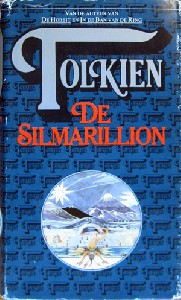
De Silmarillion is door Tolkiens zoon Christopher samengesteld uit oude aantekenboeken van zijn vader en postuum uitgegeven.
De Tolkienreligie ontstond in hippiekringen in de jaren zestig, nadat In de ban van de ring als paperback was uitgekomen, maar kreeg een duidelijke impuls bij de publicatie van De Silmarillion in 1977. De Elfenreligie is ontstaan in de jaren ’70, toen enkele rituele magiërs zichzelf voor de aardigheid identificeerden met Elfen uit de verhalen van Tolkien. In de daaropvolgende decennia werd het Elfengeloof dogmatischer en kwamen er personen die geloofden Elfenbloed of een Elfenziel te hebben.
Tolkien zelf was een overtuigd rooms-katholiek, met conservatieve opvattingen. Hij vond bijvoorbeeld dat de mis in het Latijn moest worden opgedragen. In het voorwoord bij de eerste druk van In de ban van de ring bedankte de schrijver de Hobbits voor hun hulp, maar dat veranderde hij in latere edities omdat hij merkte dat het nogal ‘heidens’ overkwam op de lezers.
Naar aanleiding van de berichtgeving in de Volkskrant ontspon zich op Facebook in wicca-gerelateerde kring een filosofisch gesprekje over de vragen of aanhangers van zulke religies hun geloof werkelijk zo serieus kunnen nemen dat ze bijvoorbeeld Gandalf letterlijk als historische figuur zien (de meesten doen dat niet), en of in feite niet alle religies zijn gebaseerd op fictie.
Religie en atheïsme
In New Scientist (juli/augustus 2014) ging het over de vraag “waarom mensen überhaupt in een god geloven”. Cognitieve wetenschappers zien religie als een uitvloeisel van het altijd alert zijn op de aanwezigheid van roofdieren, wat voor onze voorouders van belang was om te kunnen overleven. Geritsel in de struiken opvatten als bewijs voor de aanwezigheid van een of ander ‘iemand’, is veiliger dan aannemen dat het geritsel niks anders is dan gewoon geritsel. De aanname dat ergens een levend, intelligent wezen kon zijn, ook als men dat niet kon zien, zou volgens deze opvatting de kern vormen van religies.
Er worden nog wat andere psychologische kenmerken opgenoemd die mensen ontvankelijk zouden maken voor het geloof in een god (het artikel gaat inderdaad steeds maar over één god). Tenslotte wordt een sociologische verklaring aangevoerd: mensen die denken dat iemand naar ze kijkt, gedragen zich beter dan mensen die zich onbespied wanen, en daardoor zijn maatschappijen met een “bovennatuurlijke toezichthouder” succesvoller.
Na dit betoog “dat mensen als het ware voorgeprogrammeerd zijn om in een god te geloven”, zit New Scientist met de vraag waarom er dan toch atheïsten bestaan. Wereldwijd zegt 13% van de mensen atheïst te zijn, staat eerder in het artikel. Dat is best veel, als we er van mogen uitgaan dat mensen die het niet nodig vinden om een keuze te maken tussen gelovig en ongelovig, en mensen die zich niet tot een bepaalde religie rekenen maar wel ‘iets’ geloven, daar niet bij zitten. Maar het tijdschrift is daar niet erg duidelijk over.
Voor het bestaan van atheïsme zijn blijkbaar geen evolutionair-psychologische verklaringen bedacht. Er komt wel een sociologische redenering bij kijken: als mensen niet geloven in een hiernamaals, zullen ze meer gemotiveerd zijn om van deze wereld een betere wereld te maken. Tegelijk wordt atheïsme, ongeloof of secularisering een gevolg genoemd van toegenomen welvaart, veiligheid en democratie.
De algemene strekking van het artikel lijkt te zijn dat het menselijk brein religieus is, maar dat men door een goed gebruik van de ratio de religie achter zich kan laten. Toch biedt religie, of ander geloof in wetenschappelijk onbewezen zaken als astrologie, andere levens e.d., veel mensen troost en verbondenheid in een gemeenschap met gelijke ethische opvattingen. Deze emotionele behoefte, stelt de schrijver, kan voor ongelovigen worden bevredigd in humanistische bijeenkomsten of ‘atheïstische kerkdiensten’ .
Koert van der Velde houdt zich al langer bezig met religie voor ongelovigen, of zoals hij het zelf noemt ‘flirten met God’. In een gesprek met Jacobine Geel merkte hij op dat zaken als gemeenschapszin en moraal niet typisch religieus zijn: die vind je ook buiten religies. Hij vindt het niet nodig om “de buitenkant” van religies te imiteren omwille van de gezelligheid. Wat hem aantrekt, is de religieuze beleving en het zoeken naar betekenis in het leven, zonder de dogma’s van een geloof.
Meditatie en westerse filosofie I
In dezelfde tijd dat New Scientist zich het hoofd brak over religie en ongeloof, besteedde Filosofie Magazine (juli/augustus) aandacht aan de “zelfspiritualiteit” van meditatie. De term ‘zelfspiritualiteit’ is afkomstig van het Centraal Planbureau en verwijst naar spiritualiteit die zich niet uitdrukt in het lidmaatschap van een kerk, maar in het individueel op zoek gaan naar het authentieke, ware zelf, bijvoorbeeld via het observeren van de eigen geest volgens de boeddhistische vipashyana-meditatie.
Niet alleen bij de boeddhisten maar ook bij een westerse denker als René Descartes is sprake van meditatie. Zijn boek Meditaties over de eerste filosofie gaat niet over helder ervaren (zoals in een boeddhistische meditatie) maar over helder denken als innerlijke bron van zekere kennis.
Descartes kreeg toen hij begin veertig was een midlifecrisis, schrijft Jeroen Hopster, waarin hij zich realiseerde dat allerlei zaken die hij altijd voor vanzelfsprekend waar had gehouden, illusies bleken. Hij begon overal aan te twijfelen tot hij één ding tegenkwam waaraan hij niet kon twijfelen: de twijfel zelf. Twijfel veronderstelt een denkend iets (res cogitans). Dat denkende iets, zijn eigen geest, was voor Descartes de onbetwijfelbare bron van kennis over de ruimtelijke, stoffelijke wereld (res extensa, ‘uitgebreidheid’), in tegenstelling tot de zintuigen die bedrieglijk konden zijn.
David Hume stelde juist dat alle kennis die iemand kan hebben, bestaat uit een verzameling zintuiglijke indrukken. Er is buiten die verzameling indrukken geen ‘zelf’ dat los van de zintuigen kennis over de wereld kan opdoen. Deze visie lijkt op de boeddhistische gedachte dat het (denkende) zelf een illusie is.
Meditatie en westerse filosofie II
Verderop in het tijdschrift stelt Frédéric Lenoir in een voorpublicatie van zijn boek Over geluk dat het boeddhisme en de filosofie van de (jonge) stoa op elkaar lijken. Zowel boeddhisten als stoïcijnen wijten het lijden in de wereld aan een verkeerde geesteshouding. Wie de gehechtheid aan verlangens en hun bevrediging, bezit en de illusie van een ‘zelf’ opgeeft, zeggen de boeddhisten; of wie zich niet laat leiden door zijn emoties, maar zijn wil in overeenstemming brengt met de noodzakelijkheid van het lot, zeggen de stoïcijnen – die kan een gelukzalige gemoedsrust bereiken die bij de stoïcijnen ataraxia en bij de boeddhisten sukha wordt genoemd.
Alles is, zowel volgens Boeddha als in de leer van de stoa, volgens een universele wet onderhevig aan cycli van geboorte, dood en wedergeboorte. De mens staat niet buiten de wereld (kosmos) maar maakt daar deel van uit, en de kosmos maakt deel uit van de mens. Het is belangrijk om dagelijks te mediteren om emoties en gevoelens te analyseren om te zien welke in overeenstemming zijn met de rede (stoa) of tot het goede leiden (zoals mededogen – boeddhisme), en welke alleen maar lijden veroorzaken.
Lenoir ziet ook een overeenkomst in de egalitaire benadering van beide denkwijzen. Zowel boeddhisten als stoïcijnen is wel verweten dat ze lijdzaamheid prediken en zo maatschappelijke verandering in de weg staan. Maar in de sociale context waarin deze filosofieën tot bloei kwamen, was het behoorlijk revolutionair om te zeggen dat in principe iedereen het hoogste kon bereiken, en dat het niet uitmaakte of je tot een hoge kaste of een adellijke of rijke familie behoorde, of tot een lage of helemaal geen kaste behoorde of een slaaf was.
Filosofie en waanzin
In hetzelfde tijdschrift staat een interview met Wouter Kusters, schrijver van het boek Filosofie van de waanzin. Kusters maakte twee keer een psychotische periode door en vindt dat de psychiatrie, die psychoses als ziekten ziet die met medicaties bestreden moeten worden, een te beperkte kijk heeft. “Een psychose betekent lang niet altijd gekte en verwarring, maar kan een spirituele reis zijn en leiden tot een mystieke openbaring” (recensie door André Klukhuhn in NRC). Zulke ervaringen en inzichten moeten niet zonder meer als betekenisloze ziektesymptomen van de hand worden gewezen. Ze behoren bij het mens-zijn.
Een psychose treedt vaak op bij iemand die een levenscrisis doormaakt en zich vragen gaat stellen over de eigen identiteit, de betekenis van het bestaan, de aard van de werkelijkheid, het bewustzijn; kortom allemaal vragen waar talloze filosofen door de eeuwen heen iets over hebben geschreven. Waarom zou een psychose dan niet filosofisch benaderd kunnen worden?
Achter alle vragen gaat misschien wel de angst voor het absolute niets schuil. Die angst is in de ‘normale’ wereld “weggestopt, keurig verpakt. Als die verpakking openbreekt, dan komen de goden èn de demonen tevoorschijn.” Het gebruik van medicijnen is in zo’n situatie niet verkeerd, zegt Kusters, maar medicijnen geven geen antwoord op achterliggende levensvragen, zoals hoe je om moet gaan met angst voor de dood.
Sport
In de sportwereld hebben ze minder filosofische manieren gevonden om angsten te bezweren. Voetbalclub NEC kreeg de gebruikelijke rood-groen-zwarte wedstrijdkleding niet op tijd geleverd en speelde geheel in het zwart. In die outfit wonnen ze zeven van de acht wedstrijden. De trainer hoopt nu dat ze de rest van het seizoen in zwarte shirts kunnen spelen, want het zijn “geluksshirts”. (Telegraaf)
Nieuwzeelandse rugbyers staan erom bekend dat ze op het veld de haka, een oude krijgsdans, opvoeren. In het Parool vertelde de aanvoerder van het rugbyteam All Blacks (dat in zwart wedstrijdtenue speelt*) over de geschiedenis van de dans. De All Blacks doen de haka alleen als rituele overwinningsdans, zei hij. Andere teams doen de dans vóór de wedstrijd, om zich klaar te maken voor de strijd en de tegenstander te intimideren. Er zijn verschillende varianten. De traditie is ontstaan tijdens een tournee in 1888 toen het team van de All Blacks voornamelijk uit Maori’s bestond. Zij dansten de haka om de goden aan te roepen.
Op de website van de All Blacks is meer te lezen over de haka. ‘Haka’ blijkt het algemene woord voor ‘dans’ te zijn in het Maori. De dans is uitgevonden door de god Tane-rore, die op warme dagen zichtbaar wordt in het trillen van de lucht. Dit trillen wordt in de dans uitgedrukt door een trillende beweging met de handen. Tane-rore is het kind van de zonnegod Tama-nui-to-ra en zijn ene vrouw, het zomermeisje Hine-raumati. De andere vrouw van de zonnegod heet Hine-takurua; zij is het wintermeisje.
Bij de Amerikaanse autoraces heeft coureur Kevin Harvick nog geen shirt, dans of andere manier gevonden om een voor hem slecht verlopend seizoen een goede draai te geven. Op een moment dat hij voor stond, verscheen er in de garage een vrouw achter zijn auto die een apenschedel met de cijfers 2 en 4 omhoog hield. Dat zijn de nummers van de auto’s van Kevin Harvick en Brad Keselowski.
Volgens de coureur was de onbekende vrouw een fan van een andere coureur, Dale Earnhardt Jr., en probeerde ze Harvick en Keselowski te vervloeken. In verschillende races daarna kreeg Harvicks auto mechanische problemen. De auto van Keselowski kreeg een mankement in de olietoevoer waardoor er brand ontstond. Het artikel hierover vermeldt niet of de coureurs tegenmagie willen inzetten om de vloek op te heffen.
Schurken slaan
Op straat, in de buurt van het winkelgebied van Hongkong, is al tientallen jaren een handeltje in magische bescherming, voorspellingen en vervloekingen. Wie voor een vervloeking komt, laat een van de dames die daar met veel ritueel vertoon aan het werk zijn, de naam van de gehate persoon op een papiertje schrijven. Vervolgens spreekt ze een vervloeking uit en slaat zij met een schoen op het papier, dat tenslotte wordt verbrand. Deze handelingen zullen het doelwit ongeluk bezorgen. Hoe het ongeluk zich precies manifesteert, blijft in het midden.
Bijna niemand koopt een vervloeking vanwege een persoonlijke vete. De meeste klanten komen om een politicus te laten vervloeken. Het is een populaire manier om in het openbaar politieke onvrede kenbaar te maken. Het ritueel heet siu yun, ‘schurken slaan’ in het Kantonees, en de politie grijpt niet in omdat het een oud, dus eerbiedwaardig gebruik is. Het bestuur van Hongkong heeft het ooit erkend als immaterieel cultureel erfgoed. Voor iPhonebezitters die hun schurk liever niet in het openbaar willen laten slaan, is er tegenwoordig een app…
Brendon Hong bezocht Hongkong in september en ging een kijkje nemen bij de tovervrouwen, die hem al snel duidelijk maakten dat ze daar zaten om zaken te doen en niet als toeristische bezienswaardigheid. Hij bedacht dus maar gauw iemand om te vervloeken: Abu Bakr al-Baghdadi, de aanvoerder van IS! Dat vond de vrouw die hem hielp erg grappig: ze had nog nooit eerder een Engelse naam moeten opschrijven, zei ze.
De volgende ochtend vernam hij tot zijn verbazing het nieuws dat Al-Baghdadi bij een drone-aanval zou zijn omgekomen, maar dat bericht werd later weer tegengesproken: Al-Baghdadi was niet gedood. Wel ernstig gewond.
De persoon die in Hongkong het meest wordt vervloekt, is de Chief Executive (hoofd van het bestuur van Hongkong). Omdat hij een belangrijk persoon is, rekenen de vrouwen soms een hogere prijs. Een topman vervloeken is meer werk dan een gewone vervloeking. Evengoed blijft het de meest gevraagde vervloeking, schreef Brendon Hong. De ‘paraplurevolutie’ heeft inmiddels ook aan de rest van de wereld duidelijk gemaakt dat talloze inwoners van Hongkong ontevreden zijn over het pro-Chinese beleid van de Chief Executive.
Hercules
Sommigen laten hun politieke leider vervloeken, anderen willen hem verheffen tot mythische proporties. Ter gelegenheid van zijn verjaardag organiseerden aanhangers van de Russische president een eendaagse expositie van schilderijen genaamd “De twaalf werken van Vladimir Putin”, waarin hun held werd afgeschilderd als Hercules die strijd levert met onder meer een sancties-spuwende Hydra waarvan de koppen ‘Japan’, ‘Europese Unie’, ‘Canada’ en ‘VS’ heten, en een Kretenzische Stier met het symbool van de Krim tussen de horens. De expositie vond plaats in Moskou. Putin zelf was die dag in Siberië.
In de achttiende eeuw is in Frankrijk, ten tijde van de Franse Revolutie, geprobeerd de klassieke heldencultus van Hercules te (her)introduceren als alternatief voor het christendom. Maar al gauw werd de held minder geassocieerd met voorchristelijke kracht, dan met de bloedbaden van de Terreur. Dit is te lezen in het boek van Alastair Blanshard over de Griekse held.
In de loop der eeuwen hebben veel politieke leiders zichzelf geïdentificeerd met Hercules, van Alexander de Grote tot Mussolini. “Het verrassende daarbij is dat dergelijke pogingen in de regel uitliepen op een catastrofe. (…) De controle houden over de mythe van Hercules blijkt heel moeilijk te zijn. Hercules heeft te veel donkere kanten. Hij is een dronkelap, een verkrachter, een travestiet, én een held. Hij is dikwijls meer dan men aankan.” (Blanshard)
–
* Terzijde: NRC gaf in september tips voor de kleur van kleding bij sollicitaties: Wit suggereert onpartijdigheid en aandacht voor details. Grijs wekt de indruk van betrouwbaarheid en standvastigheid. Rood oogt dominant en rebels. Blauw past bij advocaten en bankiers. En zwart straalt autoriteit uit, volgens NRC. Wellicht helpt die uitstraling sporters hun tegenstanders te imponeren (zelfs zonder krijgsdans).
~ met dank aan degene die me een artikel toezond en me op een ander attendeerde ~


